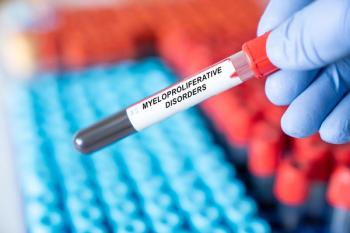
CDC Releases Report About US Birth Defects Possibly Linked to Zika Virus
In its first birth defect surveillance report about the Zika virus, the CDC said Thursday there was a 21% increase in certain birth defects “strongly linked” to the virus in the areas most affected by local transmission: south Florida, south Texas, and Puerto Rico. The CDC said it continues to recommend that pregnant women not travel to areas with risk of Zika, including US areas with endemic transmission. It also said healthcare providers should remain vigilant about these possible outcomes.
In its first birth defect surveillance report about the Zika virus, the CDC said Thursday there was a 21% increase in certain birth defects “strongly linked” to the virus in the areas most affected by local transmission: south Florida, south Texas, and Puerto Rico.
The CDC said it continues to recommend that pregnant women not travel to areas with risk of Zika, including US areas with endemic transmission. It also said healthcare providers should remain vigilant about these possible outcomes.
The research results were published in CDC’s
It is not known if the increase in the second half of 2016 over the first half of 2016 is due to local transmission of Zika virus alone, or if there are other contributing factors.
Most of the mothers who had babies with the Zika virus-linked birth defects did not have laboratory evidence of Zika virus infection—either because they were not tested, were not tested at the right time, or were not exposed to Zika virus. All cases with birth defects potentially related to Zika virus infection are monitored by birth defects surveillance systems.
CDC looked at nearly 1 million births in 2016 in 15 US states and territories, including Florida (select southern counties), Georgia (select metro-Atlanta counties), Hawaii, Iowa, Illinois, Massachusetts, New Jersey, New York (excluding New York City), North Carolina (select regions), Puerto Rico, Rhode Island, South Carolina, Texas (select regions), Utah, and Vermont.
About 3 out of every 1000 babies born in 15 states and territories in 2016 had a birth defect possibly associated with Zika virus infection in the mother:
- About 49% were born with brain abnormalities and/or microcephaly (small head size)
- 2 in 10 (20%) had neural tube defects and other early brain abnormalities
- 1 in 10 (9%) had eye abnormalities without brain abnormalities
- More than 2 in 10 (22%) had nervous system damage, including joint problems and deafness, without brain or eye abnormalities
However, the CDC said the total number of affected infants is likely much higher. Because many pregnant women exposed to Zika virus in late 2016 gave birth in 2017, CDC researchers anticipate that there could be another increase in possible Zika-related birth defects when 2017 data are analyzed.
Most Zika virus infections are asymptomatic. Detecting Zika virus RNA is complicated by its transient presence in body fluids; thus, Zika virus infection during pregnancy cannot be ruled out by negative nucleic acid testing results.
CDC uses 2 tracking systems to find birth defects that might be related to the Zika virus:
- The Zika Pregnancy and Infant Registry tracks pregnancies with laboratory evidence of Zika virus infection
- The Zika Birth Defects Surveillance system tracks birth defects possibly related to Zika virus infection, regardless of exposure or laboratory testing
The full range of developmental disabilities and other adverse early childhood outcomes associated with congenital Zika virus infection in the US can only be determined by following up the infants and children as they develop, the CDC said.
Newsletter
Stay ahead of policy, cost, and value—subscribe to AJMC for expert insights at the intersection of clinical care and health economics.













































